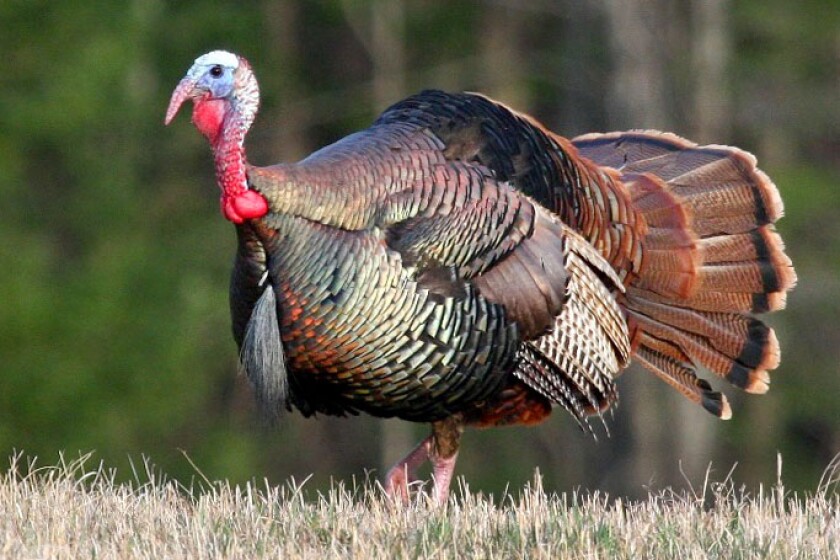DULUTH — Minnesota and Wisconsin wild turkey populations appear to be thriving, with both states coming off near-record spring hunting season harvests in 2023 and no sign yet of the mysterious decline in turkeys plaguing several southern states.
That's the report from Department of Natural Resources wildlife officials heading into the 2024 spring turkey hunting seasons that start April 17 in both states.
Minnesota hunters recorded their second-best season in 2023, trailing only the pandemic-fueled rush of hunters in 2020. Last year 53,574 permits were issued and 13,659 turkeys were registered, just 350 birds short of the 2020 record.

Moreover, turkeys continue to fill regions of the state where they were never common before, with huntable populations in virtually every county now, including across Northeastern Minnesota, where they were not expected to do well because of prolonged winter snow cover.
“Clearly, we underestimated them,” said Nathan Huck, the Minnesota DNR’s Brainerd-based game bird consultant.
ADVERTISEMENT
While acorns and other mast are their natural foods, and areas with oak trees tend to attract turkeys, Huck noted that the big birds are true generalists and will eat just about anything — from bugs and agricultural residue to birdseed and deer feed set out by humans.
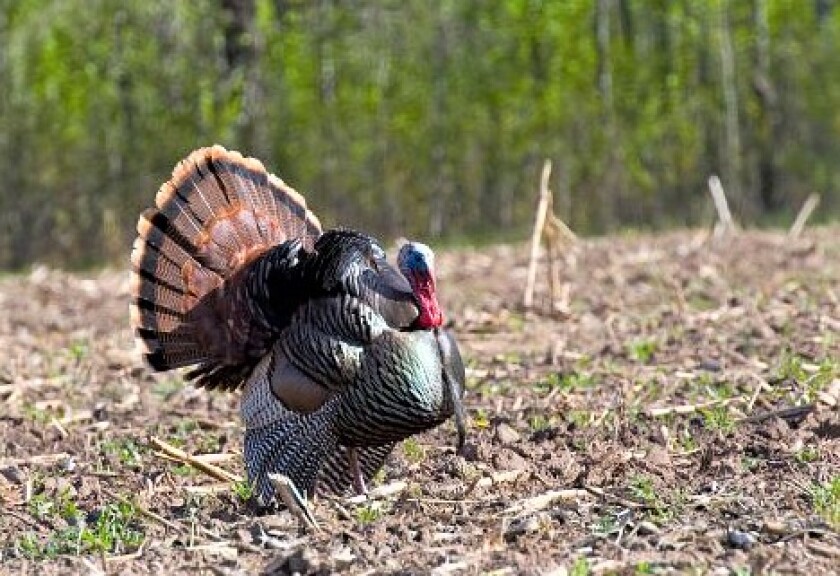
Bucking a trend, more youth turkey hunters
While down a bit from the record high in the pandemic peak of 2020, the number of hunters going afield in spring has also remained higher than in pre-pandemic years, especially young hunters. Youth licenses nearly doubled from the 6,500 average from 2014-2019 to more than 12,000 last year, Huck said, bucking the trend of declining youth participants in most other hunting seasons.
Overall hunter success fluctuates annually, often due to weather conditions during the hunt, but it has consistently averaged between 20%-25%. That’s led DNR officials to stick with their program of the last few years, which allows an unlimited number of permits for all time periods and allows hunters to hunt in any part of the state with no lottery and no restrictions. So far, the DNR has not seen any major problems with overcrowding in locations or time periods.
“There really hasn't been that big rush to go only in the first couple of seasons. … In fact, last year, the C (third) season was the busiest, probably because of the weather, the late spring, and people waiting until it got a little nicer,” Huck said. “Hunters are doing a decent job of dispersing themselves.”
The most popular zone in the state is now 507, which cuts diagonally across the center of the state, from Bemidji to just outside the Twin Cities. The traditional southeastern zone, 501, was second-most popular last year, but it's just ahead of 508, which covers the northeastern and east-central sections of the state, from the Ontario border to the north metro.
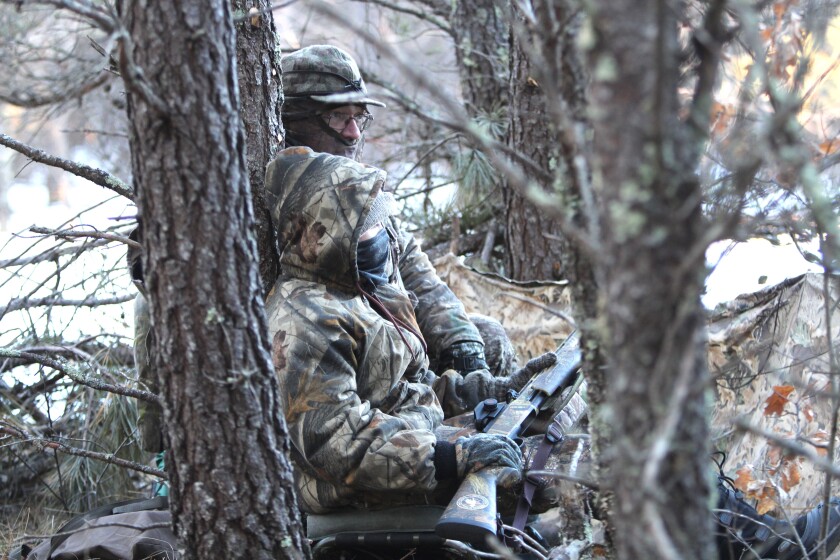
Report your Minnesota turkey, pheasant sightings
The DNR is trying to get a better handle on both the number and distribution of turkeys across the state, but that's proven elusive. They can use hunter harvest and hunter effort data and some math equations to get an estimate, but wild turkeys “are notoriously difficult birds to monitor on a large scale,” Huck said.
ADVERTISEMENT
To aid in the effort, the DNR asks Minnesotans to report observations of wild turkeys (and ring-necked pheasants) in a citizen science effort.
“We’ll be asking folks to report any pheasant and turkeys they see in the wild from May through September,” Huck said.
Information from the reports will help the Minnesota DNR monitor pheasant and turkey population trends, evaluate conservation efforts and make decisions about harvest regulations. Using a mobile device or desktop computer, people can enter information at mndnr.gov/wildlife/sightings. The page will also include the opportunity to sign up for email updates that will be sent when results are available from the reporting effort.
Wisconsin’s 2023 spring harvest up 9%
Wisconsin spring turkey hunters registered 42,439 birds in 2023, up 9% from 2022 and 7% above the five-year average. A total of 246,428 authorizations (permits) were available statewide, and hunters purchased 223,503 of them. This was the third-highest number in the last decade, exceeded only by 45,501 in 2016 and 44,982 in 2020.
Wisconsin, with nearly perfect habitat across much of the state — a mix of agricultural and forested land nearby — saw peak turkey numbers in about 2009 when hunters harvested about 50,000 birds. Since then the harvest has dropped 10%-15 % as the birds, which expanded rapidly upon reintroduction, have settled in to a “normal” level, said Taylor Finger, game bird ecologist for the DNR.
“It’s been pretty consistent, with winter weather and then weather during the hunting season being the only variables, giving us those relatively smaller ups and downs,” Finger told the News Tribune. “As long as we see our harvest numbers stay pretty consistent, we don’t think there’s any major problem out there for our wild turkey population … especially with the mild winter we had this year.”

Finger said conservative bag limits and limiting hunters to one week afield have helped keep turkey numbers high statewide, compared to some southern states, where hunters can be afield for a full month and take multiple birds per season.
“There’s strong support for keeping our system of (geographic hunting) zones and weeklong hunting seasons so we don’t run into over-harvest issues,” he said. "Turkey hunting is the one area where we are seeing increasing hunter participation, so we think we must be doing something right."
ADVERTISEMENT
The Wisconsin DNR is hoping to capture and collar up to 60 adult female turkeys in 2024 and 2025 in central areas to monitor their brood success and survival, Finger noted, to stay ahead of any emerging issues. Another factor in recent southern-state turkey declines appears to be that hens are having fewer poults and fewer of those are making it to the end of their first summer when they are big enough to fend for themselves.
“We haven't seen that yet, but we also want to take a closer look and be able to catch anything before it becomes a problem,” Huck said.
In Minnesota and Wisconsin, hunters can shoot only a bearded tom turkey in the spring seasons.
What you need to know: Minnesota 2024 spring turkey season
In Minnesota, hunters have the leisurely option of picking any of six separate seasons that start April 17. You can purchase a license right up to the day you start hunting and hunt anywhere you want in the state, limited only to the seven-day time period you choose.
The DNR asks hunters to list what zone they are likely to hunt in, but other than a few wildlife management areas where lotteries were held, hunters can hunt wherever they want in the state.
Anyone who doesn’t fill their tag in the first five seasons can also hunt again in Season F, which is the longest season but is generally considered to fall after most turkey mating activity is over.
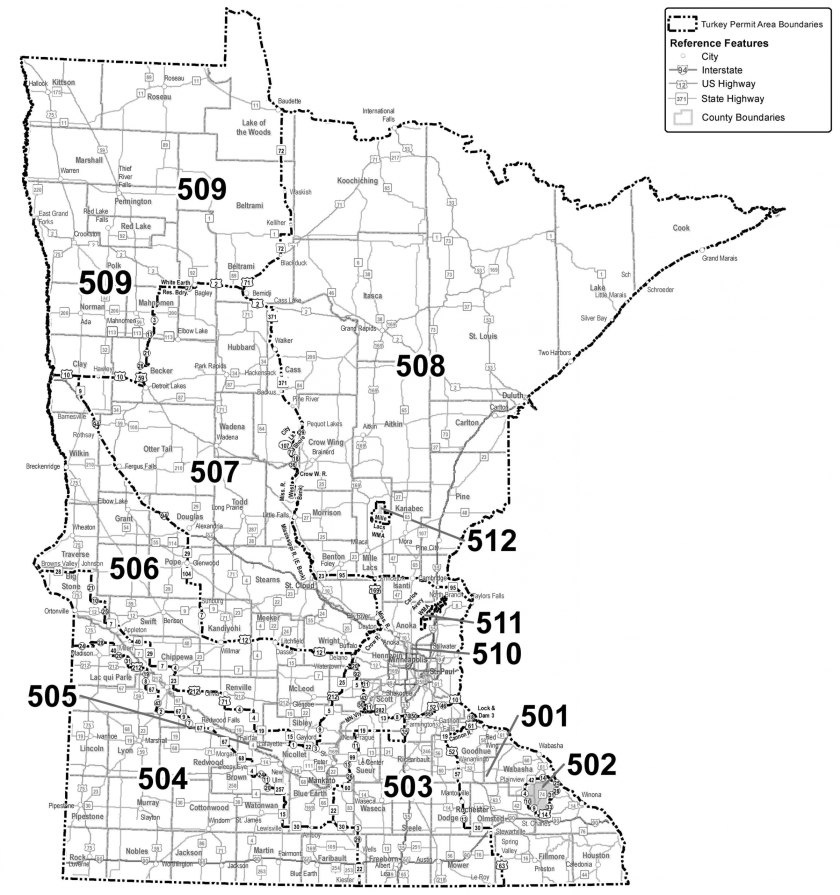
ADVERTISEMENT
Season dates
- Archery season — April 17-May 31
- Youth season — April 17-23
- Firearms Season A — April 27-23
- Firearms Season B — April 24-30
- Firearms Season C — May 1-7
- Firearms Season D — May 9-14
- Firearms Season E — May 15-21
- Firearms Season F — May 22-31
Minnesota wild turkey licenses can be purchased online, at 888-665-4236 or in person wherever hunting and fishing licenses are sold. Adult resident licenses are $26 plus fees; nonresidents are $96. Both include the state turkey stamp.
Rules include using only shotguns or muzzleloader shotguns at least .410 or larger and no larger than 10 gauge. Only fine shot size No. 4 and smaller diameter (sizes 4, 5, 6, 7½, 8, etc.) may be used. Red dot scopes and rangefinders are legal.
For more information, go to dnr.state.mn.us/hunting/turkey/index.html.
Minnesota rules
- Wild turkeys must be registered within 24 hours of harvest.
- You may now register by three methods: at a registration station, by calling 888-706-6367 or online.
- The feathers, head, and feet must remain on the wild turkey until it is registered. Once registered, turkeys may be transported with a fully feathered attached wing or an intact leg and foot.
- No person may possess an unregistered wild turkey outside the wild turkey permit area where the bird was taken unless it is transported directly to a registration station.
- Although hunters are not restricted to a permit area, hunters who register a turkey will be required to provide the permit area where they harvested their bird.
- Archery-only license holders may use crossbows.
- Ground blinds on public land must have a blaze orange safety covering on top of the blind that is visible from all directions or a patch made of blaze orange that is at least 144 square inches (12 by 12 inches) on each side of the blind.
What you need to know: Wisconsin 2024 spring turkey season
The Badger State’s 2024 six-week-long Wednesday-Tuesday turkey seasons begin April 17 and run through May 28. But most of the permits for most areas of the state were gobbled up over the winter in a lottery or in an open sale held last month.
The exception is in southern Wisconsin, where thousands of unclaimed permits are available for later seasons in southern zones. More than 30,000 permits were still available at last check for seasons E and F, mostly in zones 1 and 3 but a few for Zone 4 in the last season.
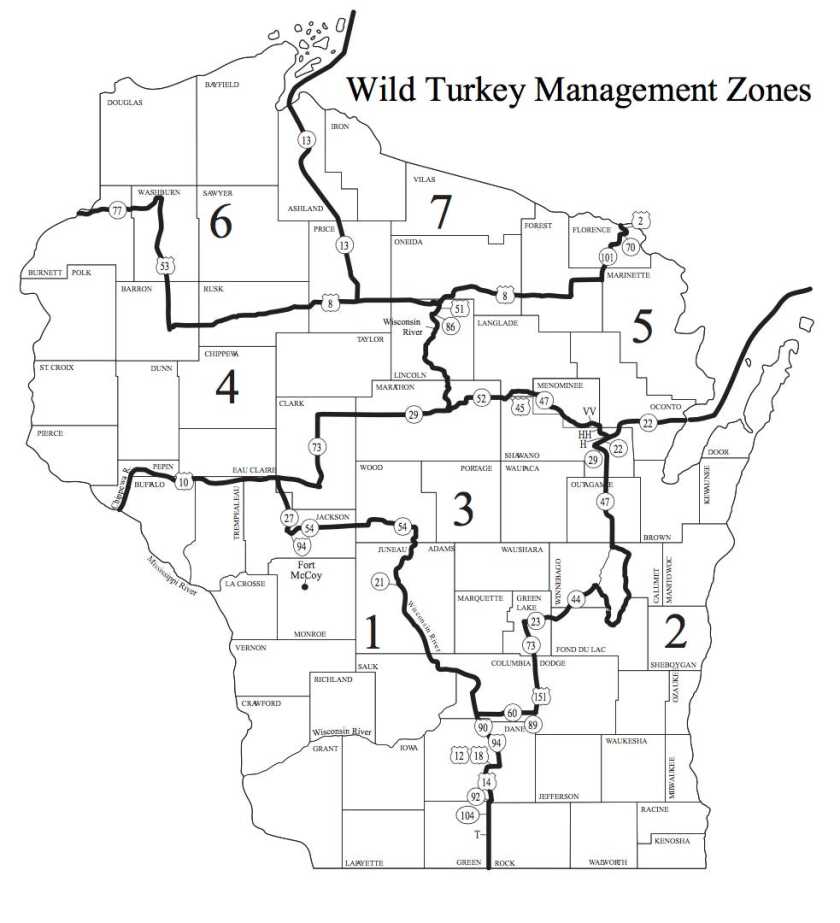
Season dates
- Youth-only season — April 13-14
- Firearms Season A — April 17-23
- Firearms Season B — April 24-30
- Firearms Season C — May 1-7
- Firearms Season D — May 8-14
- Firearms Season E — May 15-21
- Firearms Season F — May 22-28
It costs $15 to purchase a spring ”bonus” turkey authorization and acquire one of the still-available permits. That’s in addition to your turkey hunting license ($15 for residents, $65 for nonresidents) and turkey and stamp for $5.25. For more information, go to dnr.wisconsin.gov/permits/springturkey.html.
ADVERTISEMENT

